When former River Falls resident Bryce Lindevig was a young boy, he fantasized about being one of the guys in the dark suits and shades protecting the president of the United States. As he grew …
This item is available in full to subscribers.
To continue reading, you will need to either log in, using the login form, below, or purchase a new subscription.
If you are a current print subscriber, you can set up a free website account and connect your subscription to it by clicking here.
Otherwise, click here to view your options for subscribing.
Please log in to continue |
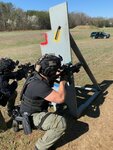
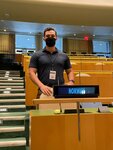
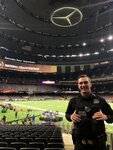

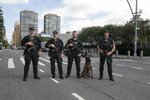
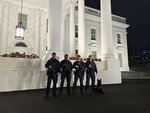
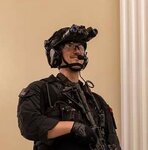
When former River Falls resident Bryce Lindevig was a young boy, he fantasized about being one of the guys in the dark suits and shades protecting the president of the United States. As he grew older, he dismissed that career aspiration as little more than a pipe dream.
Lindevig, now 27, graduated from River Falls High School in 2014 and went on to attend St. John’s University, majoring in biology and participating in the school’s ROTC program. It wasn’t until he was a college senior, attending a career fair in Minneapolis in February 2018, that he revisited his childhood dream of being a Secret Service agent.
Lindevig said that, as graduation approached, he had been searching for a job in biology and had received a couple of offers in research positions – one for Mayo and one for Children’s Minnesota, but he says he wasn’t sure if he wanted to be stuck in a lab all day, and he knew he would need to get a PhD if he chose a career path in biology.
“I was really searching for something to be excited about – a fresh start,” he said.
At the career fair, the Secret Service booth caught his eye.
“I was getting ready to leave, but I decided to go back,” he recalled.
He remembers thinking: “Let’s see what they have to say.” Little did he know that this decision would change his life in a monumental way.
Lindevig said after spending time with representatives at the Secret Service career booth, he realized that joining the Secret Service was, in fact, feasible. Knowing that only one out of every 100 Secret Service applicants makes it through the process, Lindevig submitted his application.
He received his invitation to interview with the Secret Service while he was on Spring Break with friends in the Dominican Republic. He laughed as he recalled how one of his buddies had managed to lose his cellphone.
“When I finally found my phone, I pulled it up, and there was an invite to interview with the Secret Service,” he said.
When Lindevig returned from spring break, he reported to the Minneapolis Field Office for his first interview, which went well. His second interview focused on security.
“They go through your entire background — where you’ve been, your credit history — and they prepare you for your polygraph test,” he said.
Lindevig waited awhile before taking the polygraph — he still had five months of Army officers training to complete in Ft. Lee. Although he can’t reveal the specifics of the test, he claimed it was “the worst six hours of his life” and something that Secret Service members must endure every five years. After passing his polygraph “with flying colors” and then passing his medical entrance requirements, he received a conditional offer to join the Secret Service. The interviewing process had taken one full year.
In February 2019, after finishing his Army business at Ft. Lee, Lindevig reported to the Minneapolis Secret Service field office for four weeks of shadowing agents and “seeing what the Secret Service was all about.” One of the highlights, he saod, was when Michelle Obama came to town and getting to shadow agents while they did detail for her.
“I didn’t get to meet her, but she passed by me,” he said.
Finally, in October 2019, after three months of training at the Federal Law Enforcement Training Center in Georgia and three months at Maryland’s Secret Service Academy, Lindevig graduated as a Secret Service Uniformed Division officer.
Spending time as a Uniformed Division officer was a necessary career stepping stone for Lindevig and involved providing the White House complex with physical security. Much of his time was spent screening people entering the White House or other venues with magnetometers (metal detectors) or “standing a foot beat” at the White House complex. When then-president Donald Trump attended the 2020 College Football National Championships in New Orleans, the Uniformed Division was tasked with screening attendees.
“I met a lot of angry, drunk college students, because I had to take away their vapes, which could be used as bomb triggers,” he said.
Lindevig admitted that this was not his dream job. He said it involved “a lot of long hours just standing there, screening people, opening gates for people” and “it got boring pretty fast,” but that he knew that serving the Secret Service in this capacity would get his foot in the door and lead to more exciting work. He added that he did get to meet some interesting people during this time, including “The Rock,” who he claims was a “super cool dude” who wanted to have his photo taken with Lindevig and his team, as well as Dr. Oz and Ivanka Trump.
He admits he gets a little starstruck when his path crosses with those of celebrities. For instance, last Christmas, he and his fiancee, Leah Woienski, a neonatal intensive care unit nurse, attended a holiday event at the White House and got to pose for a photo with President Joe and Jill Biden.
“The whole thing was over in about 15 seconds, but getting to walk up and talk to the president and shake his hand — I don’t know if I’ll ever get used to that,” he said.
After two months of serving in the Uniformed Division, he applied for the Emergency Response Team (ERT), which he describes as a SWAT team for presidential detail. His ERT training was his most challenging, but also most rewarding, because.
“It was something that I had to earn. I had to show up every single day, survive, and do my absolute best – or I’d get cut,” he said.
His instructors were the best of the best -– former Navy Seals and former members of Delta Special Force unit. He recalled one instructor who had been with the Navy Seals Basic Underwater Demolition/Seal training (BUDS) who would punish trainees with water – putting them in creeks or hosing them down while they did pushups.
“And this was January in DC,” he said. “It was freezing.”
Training involved a lot of running with heavy equipment, hoisting buddies who, with equipment, weighed 300 pounds, and shooting targets with extreme precision.
“The Secret Service prides itself on being the best shooters in law enforcement,” he said, “because we’re always working around the president. If you have to make a shot around the president, it must be very precise.”
He said that instructors would place a tobacco dip can on the upper chest of a target. If trainees hit the target outside of the can, they would be cut from the program. “Seventy-five percent of those I started with were cut.”
Lindevig said he did not grow up with firearms and didn’t really use one until he entered the ROTC program. Still, he didn’t realize until he started training with the Secret Service that he was naturally good at shooting with accuracy.
After the intense ERT training, Lindevig graduated from the program. He said there was no typical day working with the ERT, whose job is to protect the White House, White House complex, and any residence the protectee is in from a coordinated attack. He said that the ERT is responsible for dealing with White House fence-jumpers, and recently, it was the ERT who dealt with the toddler who slipped through a White House gate. Lindevig has had to deal with two situations with active shooters, but the most intense and scariest situation he encountered as a member of the ERT was in the aftermath of George Floyd’s death in May 2020, when angry rioters stormed the fence line of the White House. There was a concern that the mob would try to jump the fence and overtake ERT members and perhaps try to steal their weapons. Lindevig said he worked the second night of the riots, and that he remembers the cloud of tear gas hanging over the White House, the massive amount of people, and the hatred toward the ERT, which he describes as “stunning–especially for a guy coming from the Midwest, where everyone is chill.” He said that riding toward the White House, crowds threw bricks at his car.
“It’s the first time I’ve experienced that kind of hatred for me with no clear reason.”
He said the experience made him more distrustful of the public, which he described as unfortunate.
“You don’t want to turn too negative toward the public, because, at the end of the day, you’re serving them as a government official,” he said.
He was on leave and not working during the January 6, 2021 insurrection.
Lindevig has spent the last three and a half years as a member of the ERT team, but in mid-May he will begin his special agent training. Following completion of this training in September, he will report to his first special agent assignment in Honolulu, where he will likely be providing security detail for the Obamas, who have a residence there, and also be involved with cyber fraud and counterfeit investigations involving Asian countries. In addition, since the Honolulu post is close to Asia, his team will be assigned to traveling to Asian countries in advance of a presidential visit to prepare security.
Lindevig admitted that Secret Service hours can be grueling. As part of the ERT, he worked 10-hour rotating shifts.
“You’ll work 10-to-10 one day and then 6-to-6 the next day. I never really got into a regular routine,” he said.
He adds that he will be starting his new job as special agent during a campaign year, which will involve a lot of travel and long hours.
Lindevig said one of the best parts of his job so far has been the training — getting to work with the best people in their field, from CIA to Delta force to Navy Seal. In addition, he feels that his profession has allowed him to be a part of history. For instance, on President Biden’s inauguration day, Lindevig was in the motorcade escorting Biden from the Capitol to the White House.
“You’re actually there, seeing it with your own eyes, while everyone else is experiencing it from the news channel couch,” he said.
Early on in his career path, he aspired to one day be a part of the presidential detail, to be the stereotypical agent who could be seen opening doors for the president. He still would like to do that for a year or two. But now his “peak goal" is to one day be the lead agent for a small security detail, perhaps being assigned to a child or another family member, because it would be a “calmer vibe and more personal.”
And his advice to those who aspire to work for the Secret Service: “Don’t be afraid to fail, and just take that leap.
“Honestly, this is a dream come true,” he said. “On hard days, I pinch myself and tell myself that I’m living my childhood dream.”